Creeps be creeping
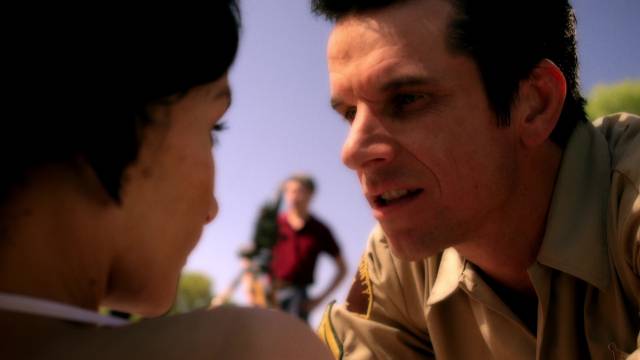
in Pete Schuermann’s The Creep Behind the Camera (2014)
Making movies is hard work, so it’s safe to say that no one sets out to make a bad film. There are many reasons why the history of cinema is littered with failures. Lack of money and resources is a common factor; lack of talent even more common – resources are not enough to overcome that, which explains why many bad movies are produced on a lavish scale. And yet for all the big movies which flop, it’s most often the small which receive the most contempt and ridicule. This is where a confluence of factors so often produces strange, even inexplicable results which baffle viewers who respond with mockery and feelings of superiority. And yet among those would-be auteurs, there are frequently indications of a passion for what they’re doing, a genuine commitment that outstrips their abilities, resulting in work which never had a chance to compete with the industrial polish of even the lowliest studio-produced B-movie.
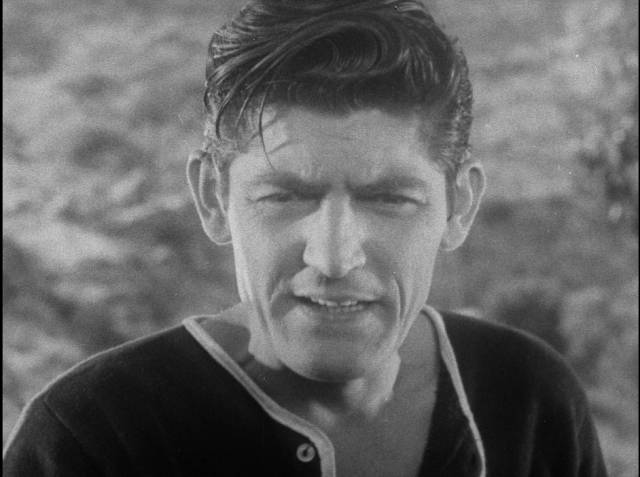
Among this coterie are a few who nonetheless have achieved a kind of stature which may not conform to the self-image they themselves nurtured, but which nonetheless has given them a type of fame – people like Ed Wood Jr and Andy Milligan, whose work belies the label “the worst” because their movies are genuinely entertaining and, in the case of Milligan at least, express a clear if bleak and depressing view of the world. Ed’s movies possess a kind of naive charm, but Andy’s are filled with nihilism and misanthropy, the outlook of a bitter man who managed to say what he wanted to say with almost no resources at his disposal.
But there are many more who seem not to have any larger ambition than to turn out movies which amount to simulacra of what is common in the mainstream – most often working in popular genres which might at least guarantee some small return on their tiny investment. Here you get people like Ted V. Mikels, Al Adamson, Don Dohler. Even among these, nuggets of entertainment can be gleaned from the mounds of dross.
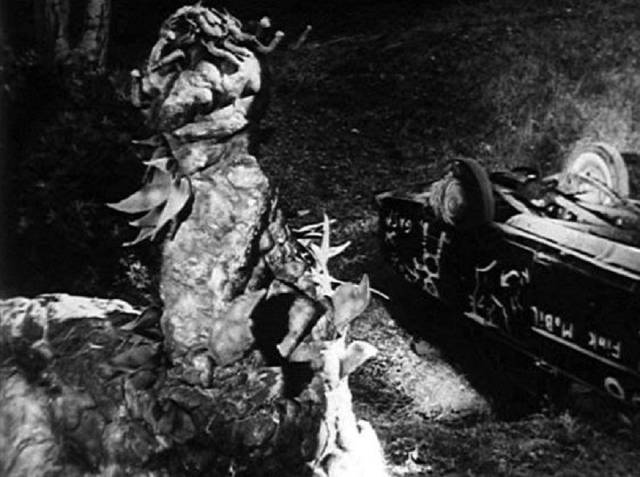
There are many movies to be found at these lower levels of creativity, the kind of movies subjected to the smug contempt of people like the Medved brothers and the Mystery Science Theater 3000 crew. One such target of these people is a baffling low-budget oddity from the early 1960s called The Creeping Terror (1964). Written by Allan Silliphant, younger brother of the prolific, award-winning Stirling Silliphant, it was credited to director A.J. Nelson, a pseudonym for the film’s star Vic Savage, whose real name was Arthur Nelson White. His only previous credit was as writer, producer and star of a juvenile delinquent movie called Street-Fighter (1959), which is notable for being the directorial debut of Joseph Sargent, who many years later went on to make a number of fine features, among a great deal of television work, including Colossus: The Forbin Project (1970), White Lightning (1973) and The Taking of Pelham One Two Three (1974).
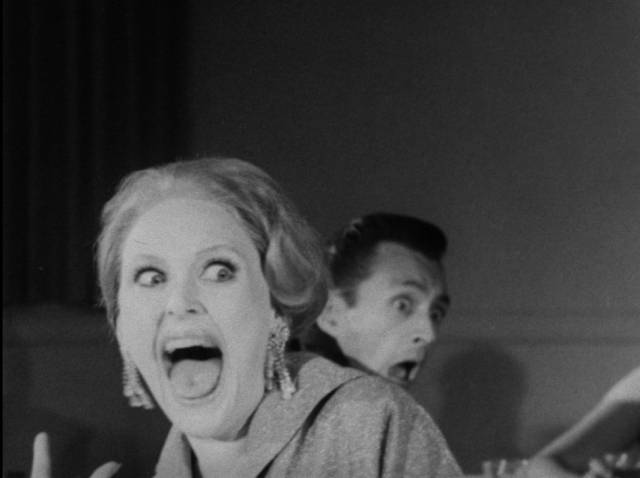
The Creeping Terror on its surface is obviously a crude attempt to emulate 1950s sci-fi, already out-of-date by 1964. In outline it follows a familiar formula: a spaceship crash lands near a small town and an alien monster emerges and begins to eat people. A local sheriff’s deputy and eventually the army try to stop it, while a scientist wants it alive because we could learn so much… So far, so familiar, but something seems immediately off. We see characters talking, but what we hear is a narrator portentously telling us what’s happening on screen and intermittently speaking some of the dialogue. Except for occasional moments when we suddenly get a snatch of sync sound. This is really disorienting.
Better still is the monster, a large precursor of Star Trek’s Horta from the “Devil in the Dark” episode (1967) and the silicates in Terence Fisher’s Island of Terror (1966). It has a large flat body which drags along the ground from the front of which rises a neck and head topped with multiple eye stalks; the large vertical mouth is distinctly vaginal. Obviously made from old quilts and carpets, it has enormous appeal as an example of low-budget ingenuity. However, it moves very slowly, so its victims are forced to wait patiently for it to reach them and then throw themselves wilfully into that mouth.
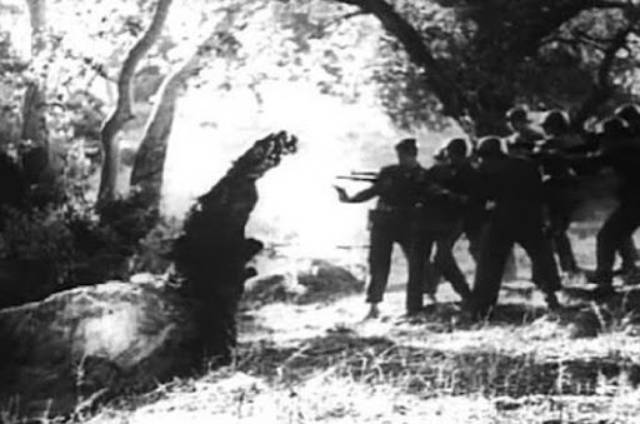
While the slim story unfolds, the movie takes numerous inexplicable side excursions which make no narrative sense – from the deputy pausing to park with his new wife for a bit of necking in the car while the monster roams the countryside; to an interlude when his fellow deputy and long-time buddy drops by for a beer and obviously resents the wife having come between them; to the big set-piece attack on a dancehall where the monster slides in very slowly and all the patrons, instead of heading for the exits, cluster around and wait to be eaten while a couple of guys for no apparent reason get into a fist fight while ignoring the monster.
The fascination of The Creeping Terror comes from the impression that it was made by someone who had never actually seen a movie before and didn’t understand the basics of how to tell a story.
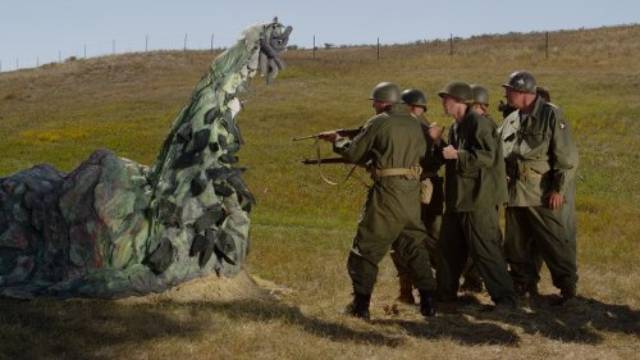
But there was actually more to it, at least as told in Pete Schuermann’s The Creep Behind the Camera (2014), a movie with issues of its own, which tells the story of Vic Savage and his attempt to make the “biggest monster movie ever”. Having set out to make a documentary, Schuermann eventually uses interviews with a number of people involved in the production as well as fans and commentators to frame a dramatic re-enactment of the story. While a lot of this echoes Tim Burton’s Ed Wood (1994), with its amused perspective on naive ambition and incompetence, there’s an unsettling sourness here because there’s no way to present Savage as a charming naif (itself an inaccurate image of Ed in Burton’s film, which elided a lot of Wood’s more unsettling characteristics). In Schuermann’s telling, Vic Savage/Art Nelson was one of those people who loved the idea of playing the role of filmmaker without actually wanting to put in the effort to do the job; somehow the persona he created for himself got him into meetings with people who had money to put into movies, and it got him sexual access to inexperienced women lured by the idea of a glamorous career, but it was unfounded on any actual ability to make a movie.
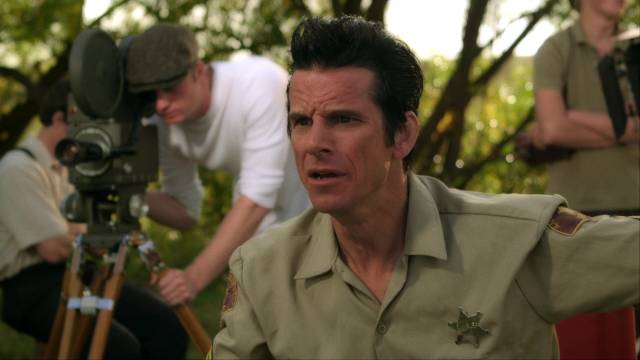
As the title indicates, Vic Savage was a pretty unpleasant character. Not simply a con-man scamming money from an investor to make his cheap epic, and not simply delusional about his own talent … he was a full-blown sociopath who used and abused people, including his wife Lois whose life he made hell while faking the role of filmmaker to scam money and crassly exploit other women. While Schuermann treats the narrative of making The Creeping Unknown as yet another comedic story of a deluded guy trying to do something way beyond his abilities, the sheer dangerous nastiness of Savage is frequently genuinely horrific. A clown on set, he’s too disturbing in his domestic life to be in the least funny. It seems clear that Schuermann set out with the idea that the story behind such an absurdly incompetent movie must be packed with laughs, only to find himself dragged into something so much darker and more unpleasant.
Although he followed where the story led, he never quite abandoned that original impulse towards comedy, resulting in a tonally confusing film which seems to have forgotten to dig into why Savage ever wanted to make his monster movie in the first place. It’s almost as if Schuermann himself got sucked in by the con man and ended up somewhere other than he had originally intended. That place is most disturbing in a sequence late in the film, just before Nelson disappears; dealt with obliquely so that it takes a moment to realize what’s happening, we see him dealing with a couple of what appear to be mob guys as he sets up a camera in a run-down house … and it slowly dawns on you that he’s preparing to shoot a child porn scene in order to pay off a debt. If you’ve managed to stick with him through all the previous abusive behaviour, this is the point where even a sliver of sympathy is no longer possible. The term “creep” in the title is completely inadequate.
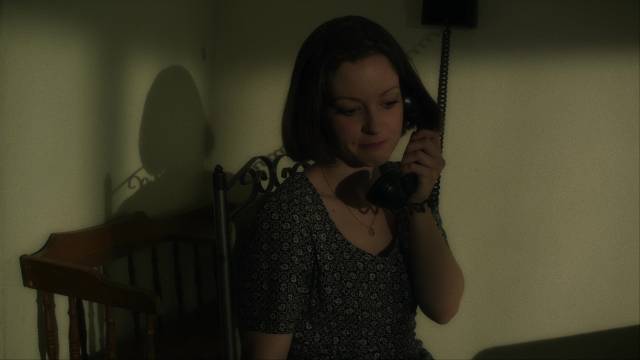
As a viewer, I found myself wishing there was more of the documentary material and less of the staged drama – though it’s true that a lot of the “re-enactments” are impressive as drama, partly because the film is well shot by Jeff Pointer, but mostly because Schuermann has assembled an excellent cast. Josh Phillips, who seems to have done a lot of voice work for anime series, gives a career-making performance as Vic Savage/Art Nelson (though he doesn’t seem to have done much since). He has the dangerous charm of the sociopath who manages to manipulate everyone he meets and bend them to his will; but the more you get to know him, the more dangerous and less charming he seems. He’s very well matched by Jodi Lynn Thomas as Nelson’s young and rather naive wife Lois who goes through the stages from infatuation to fear to, finally, the strength to assert herself and escape the abuse.
Surrounding them are a very good supporting cast, all of whom manage to play their roles relatively straight even when the movie leans towards comedy, as in the absurd on-set sequences where Art Nelson’s complete incompetence is all too apparent. Where a role represents one of the on-screen interview subjects, the match is very good, particularly with Thomas as real-life Lois Wiseman and Bill LeVasseur as William Thourlby, the man who put up the money for The Creeping Terror. Among the interviewees, who also include writer Allan Silliphant and Michael Medved, the biggest surprise is award-winning special effects creator Richard Edlund who at twenty-three created the B-movie’s opening titles.

Ultimately, other than being a portrait of a pretty unpleasant man, The Creep Behind the Camera is most interesting for making clear why The Creeping Terror ended up being so inexplicably peculiar. It’s not just that Nelson was incompetent and ended up spending a lot of the production money on drugs and sex; it’s that he never actually finished shooting the movie before he disappeared. Thourlby found the material which had been shot abandoned in a garage and hired an editor to do whatever he could with it. Problematically, most of the sound reels were missing, hence the resort to almost wall-to-wall narration. From a filmmaking point-of-view, the brief scenes near the end in which Thourlby and the editor watch the material and try to figure out what Nelson could possibly have been thinking are the most amusing – they too wonder what the hell the fight in the dancehall is supposed to be about.
If Tim Burton viewed Ed Wood through an overly romantic filter, he did manage to capture some of the spirit which enabled Wood to make his naive yet entertaining movies. Art Nelson aka Vic Savage couldn’t be bent in that direction. At least, as seen here through the interviews with those who knew him (and were cheated and abused by him) and the ultimately chilling performance of Josh Phillips, there’s not much to like and thus less inclination to view The Creeping Terror with the kind of affectionate indulgence that Wood’s movies elicit from his fans.
*
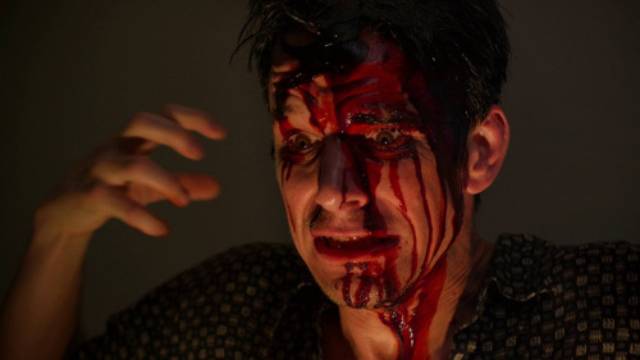
If I seem ambivalent about all this, I have no qualms about Synapse’s Blu-ray. Shot on hi-def video, the film has a crystal clear and detailed image, with Schuermann making no attempt to emulate the kind of cheap B-movie which is his subject. While the feature is well presented, the extras are what make the disk really worthwhile. I haven’t listened to the commentary yet, but there’s a decent twenty-five-minute making-of and an interesting video diary about the creation of the “carpet monster” which details the painstaking recreation of the original movie’s alien menace.
There are some deleted scenes, an alternate ending, a brief clip with actor Byrd Holland (the sheriff in The Creeping Terror) and writer Allan Silliphant chatting after their interviews, a featurette about shooting Nelson’s death scene (he ended as a derelict dying in a back alley), and a Q&A after a Screamfest screening. But the capper is a 2K scan of The Creeping Terror itself made from a print which is in pretty good shape so it can be appreciated in all its incompetent glory, leaving you to wonder just what young drive-in audiences must have thought when it played back in the mid-’60s.
Comments
Not sure that’s going to go on my wanted list but it’s interesting to hear about the man behind the film. I’m thinking that there must be a good number of creepy film makers out there, they’re in the general pop so you’d expect some to turn up.
I’ve been collecting Ray Dennis Steckler films of late and have acquired most of them, including the adult films he made. The porn films are much poorer than his early films. Lucky many are available for free on the internet.
I’m also slowly working through Jerry Warren’s films. That’s a guy who needs to be smacked with the disinterred skull of Paul Naschy. Jerry’s really a talentless man. I think he might have made more money by hawking the foreign films he cannibalized for his own films. I’ve only gotten through the first of his collections, two more to go, plus a good lot of other films not collected by Kit Parker. Not sure why I beat myself up like that. Something to complain about I guess.
I’m not willing to go back and watch anymore Andy Milligan films, enough doo doo on my plate as it is. I was once paid to turn off The Rats Are Coming, The Werewolves are here during a group watching. It wasn’t much, the rental fee, but I took it and we watched something else. I pride myself on being able to sit through most awful films, though I will use the speed control on occasion.
I think the guys who set out to make poor films are the guys who make those parody films, people like Christopher Mihm, and I’m not fond of them as they seem, to me, that they think the film makers they copy were trying to make poor films. I recently watched Space Captain: Captain Of Space, a parody of the Flash Gordon serials and it was really annoying for that very reason.
On the other hand Subferatu was much more entertaining. It’s a mash up of Nazis and Gilligan’s Island with time travel and vampires. I got a free DVD from the director for mentioning the film. That was nice. You can watch it for free on Amazon Prime in the US but he doesn’t sell the DVD through Amazon, only eBay and Esty.
Just finished Ayoade On Top by Richard Ayoade and found it fun. It’s a look at Gwyneth Paltrow’s View From The Top. I can’t imagine seeing the film itself. Well I can, but it ain’t happening.
I actually haven’t seen anything by Steckler or Warren, but have been dipping into Severin’s Al Adamson box set … some of his movies are quite entertaining, but his tendency to recycle movies two or three times by shooting a couple of extra scenes and rearranging the editing a little does try my patience. Best thing so far is the documentary about Adamson, who seems to have been a likeable guy whose life had a really terrible ending.
Haven’t seen Subferatu or Space Captain, but a friend did recently lend me Velocipastor, one of those movies that sounds like more fun than it actually turns out to be.
We watched Velocipastor at our old Friday Night Movie night last December 2019. It’s got some funny bits and some unintentional funny bits. I gave it a well generous 5 for it’s sense of humor, it should be more a 4 really but the ludicrousness of the rapter suit made us all laugh a lot. I miss our movie nights.
Back in Dec 2019 it averaged a 5.9 on the IMDb, 38 of the 186 votes were a 10, that represented 20.4% of the votes. As I look today it’s rating is a 5.1 with 3032 votes, 657 of them are a 10, that’s 21.7%. Are these people on crack?
The director must have a really large group of friends with really large families … I did like the dumb dino-suit…
There’s a couple of box sets of Ray’s early movies, Midnight Movie Collection Vol 1 & 2 on Amazon for a fair price of about $30 US for the two sets. I just looked and they are about 50 bucks Canadian on Amazon Canada, plus some shipping. You can see a fair number of his films on YouTube. Here’s a channel that has a whole bunch of them. Most are watchable but slightly low rez.
https://www.youtube.com/playlist?list=PL635F5299EE80D553
There’s 8 movies in the two sets and it includes Ray’s big hits The Incredibly Strange Creatures Who Stopped Living and Became Mixed-Up Zombies, The Thrill Killers, The Adventures of Rat Phink and Boo Boo, and The Lemon Grove Kids Meet the Monsters Trilogy.
I bought both of the sets and enjoyed them pretty much. He’s no great shakes as a film maker but he’s enthusiastic, I often enjoyed his commentaries as much as the movie.
Ray was featured in an episode of Jonathan Ross’s Incredibly Strange Film Show back in the 80s. That series is on YouTube and worth a look. Besides Ray, Jonathan does episodes on Ed Wood, Tsui Hark, Stuart Gordon, David Lynch, Sam Raimi, Jodorowsky, John Waters and more.
https://www.youtube.com/playlist?list=PL9GUMSCO9oF72VC99qAbh5MJfTxIDka3X
Jonathan goes to visit all the living film makers in their home towns and does interesting interviews. He’s a big fan of these guys and it shows. I usually like Jonathan’s work, he did a nice documentary about Steve Ditko the original Spider-Man artist. It’s on YouTube too. He also did a three part show on the Asian Invasion, it’s a few years old but on YouTube. I posted a lot of this stuff on my blog in the last few weeks.
I just found out that Ray directed the Jefferson Airplane video for White Rabbit and another for The Nazz. You can see them on YouTube.
Jerry Warren is a hack but one of the films he chopped up, Terror In The Midnight Sun is pretty entertaining in its original form. It’s an alien encounter movie set in Lapland. Jerry hacked it up twice but the original is worth a look. You can read more details on the hack job here.
https://garth.typepad.com/primitive_screwheads/2020/08/friday-night-movies-800.html
Their names always came up in books and magazines I read about movies back in the day, but for some reason I never got interested – same with people like Andy Sidaris and Fred Olen Ray. I bought the Al Adamson box set because his Brain of Blood was included in Severin’s Hemisphere Horrors box set and, bad as it is, there were enough entertaining elements in it to get me interested…
Our Friday Night Movies group certainly has a very severe lean toward the Psychotronic sort of film that includes all of these guys mentioned. We’ve been doing this since the 80s and we’ve actively sought out films from all over the world. It’s certainly gotten easier to find stuff in the last 15 years but now DVDs are drying up and it’s once again going to get harder. Glad I have most of the films I really want.
I missed getting the Al box when it was released, curse these limited edition sets and the scalpers that ride in bulk buying for a profit. I’m still not sold on Al, most of the films he made weren’t that good. Not that it makes much difference, I’ve certainly bought a whole lot of stuff that’s worse.
I thought Brain of Blood was pretty poor, I wouldn’t recommend it to anyone, and gave it a 1 on the IMDb. I’ve given higher scores to a few of the other Adamson films I’ve seen but nothing much more than a 3 from a quick check on Al’s IMDb listing. Hardly any of his IMDb scores are over a 4 and for good reason.
It’s too hard to be interested in everything, I certainly can’t get interested in dramas and art films anymore. Wong Kar-Wai leaves me cold and bored. A friend just posted he’d been watching Berlin Alexanderplatz and that’s an awful thing to me. I watched part of it and couldn’t get past the first hour. That was ages ago, it was on tape at the time. I guess I’d rather wallow in another sort of dirt. I don’t want to watch a fair number of the films you’ve commented on. Not that I’m making like they are bad here, just no interest in my mind.
Andy Sidaris is pretty poor also, I bought a 12 pack of his T&A action films and it’s fake breasts all the way down. Fred Olen Rey is a fair bit better but he’s not one of the people that I bother much with. The different people in our Friday Night Movie group all have a different sort of interest so we’d bring a variety of stuff to watch each week.
Interestingly enough, we all seem to dislike Paul Naschy. Thus, in a flight of fantasy on FNM night I thought about digging up his corpse so I could clean up the skull and use it for a means of vengeance, knocking the nut sack of some horrible film maker with my arm whirling like a windmill of bones.
I still enjoy serious movies when I watch them – it helps that I get a couple of Criterion releases to review every month … but left to my own devices, I do tend to lean towards “junk”. Just watched Arrow’s Gamera collection and have been making my way through Criterion’s Godzilla set (afraid I have to say Arrow mops the floor with Criterion in this instance), and have stacks of Severin and Vinegar Syndrome releases waiting on my coffee table…
I think I may have seen only one Paul Naschy movie … another name that’s really familiar from years of reading about him in books and magazines, seeing pictures of his werewolf character … and yet I’ve never felt the urge to to seek out the movies.
Vic Savage/Arthur Nelson sounds like he’d be a great Jim Thompson character. Haven’t see the original movie or the documentary, though.
Jim’s psychopaths are more sympathetic!
There’s no record of “Creeping Terror” playing in theaters/drive-ins in the 1960s. A search on newspaperarchive.com reveals it likely never received a theatrical release. The film begins to appear on TV in the Florida area in late 1975, then further nationwide in ’76.
That may well be true – I haven’t dug into it, but just went by IMDb and Wikipedia, both of which give a 1964 release date. I imagined that would have been limited to Southern drive-ins, but it wouldn’t be surprising to hear that even they balked at screening the movie!
The dance hall scene fight at the end is when a guy finds another guy attacking his girlfriend and ripping her shirt off. She backs up holding her chest. I’m watching it now on MST3K on Roku and wild to find out Vic Savage was a con artist. I think Hollywood was a particularly good place for them to operate and still do. Thanks for explaining the film about him so I don’t have to watch it. He did everyone a favor disappearing.